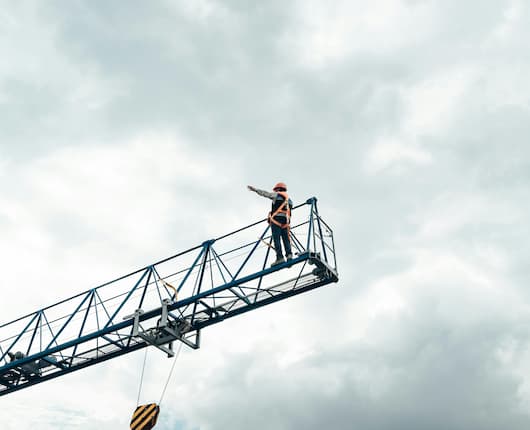
As we step into a brand-new year, it’s the perfect time to reflect on our professional goals and commitments. At the forefront of these should be the safety of our teams of workers, especially when it comes to work at height.
Working at height is among the most dangerous activities in various sectors, especially in construction, maintenance, and telecommunications. Unfortunately, insufficient training for working at height is still a common problem, resulting in serious repercussions for employees, management, and companies overall. Let’s delve into the essential elements of height safety training, covering the associated hazards and risks, as well as the significance of following correct procedures. It also emphasises how Leading Edge can assist in closing the training gap for working at heights.
Insufficient height safety training presents risks not just for employees but also for management. For employees, inadequate training can result in falls from heights, which rank among the top causes of injuries and deaths on sites globally. Incorrect usage of safety equipment, like harnesses or anchor points, also heightens the chances of accidents. Additionally, poor hazard recognition, including the inability to identify unstable surfaces, adverse weather conditions, or improperly secured ladders also adds to the list when working at height.
Inadequate training can also lead to several serious issues for management, including legal repercussions. Companies might encounter lawsuits, penalties, or even criminal charges if they do not adhere to safety regulations. Incidents can harm a business’s reputation, impacting client confidence and future opportunities. Injuries or fatalities can bring projects to a standstill, resulting in delays and financial setbacks. With all this at stake, it’s in the company’s best interest to provide work-at-height training.
Aside from personal falls, falling objects pose a significant risk. Items or tools dropped from above can cause harm to individuals below. It’s therefore important for workers to take part in tool tethering training to ensure all tools and objects are secured correctly.
Structural failure is also an issue as this can result in casualties. If temporary structures on a construction site are not properly installed or maintained, platforms, scaffolding, or ladders can collapse. Weather conditions such as high winds, rain, or icy conditions can also heighten the risk of accidents.
The amount of time a worker is expected to work at height can pose dangers if not managed correctly. Prolonged work at height can lead to fatigue and dehydration, which can decrease concentration and increase the chance of errors.
To minimise the chances of accidents while working at heights, it’s important to follow these safety measures:
There isn’t a one-size-fits-all answer, but generally, work performed on a construction site at heights over 2 metres (6.6 feet) is often regarded as high risk. In various sectors, tasks that involve the use of fall protection systems or scaffolding are considered dangerous. It’s important to check local regulations, like the OSHA (Occupational Safety and Health Administration) guidelines in the U.S. or the Health and Safety Executive in the UK to understand the specific height limits for high-risk work.
Leading Edge are committed to providing comprehensive height safety training and equipment, ensuring workers and companies meet the highest safety standards. Here’s how we can help:
Inadequate height safety training is not just a regulatory failure—it’s a moral and operational risk. Workers deserve to go home safely, and businesses have a duty to provide the training and tools they need to work at height without fear. Leading Edge bridges the gap, offering expert training and support to ensure every worker is equipped to perform their job safely and confidently.
View our specialist work at height courses.
This year, let’s prioritise safety by investing in comprehensive working at height training. It’s time to make every site a safer place.
Copyright 2025 Leading Edge Safety. Devloped by Czargroup Technologies
